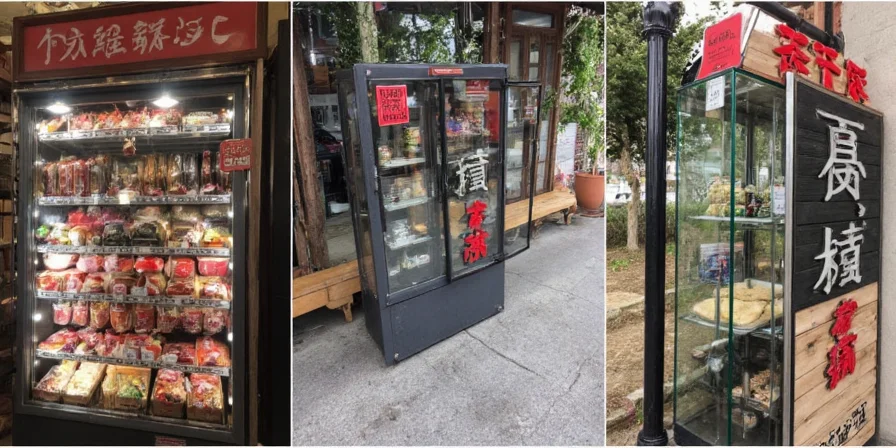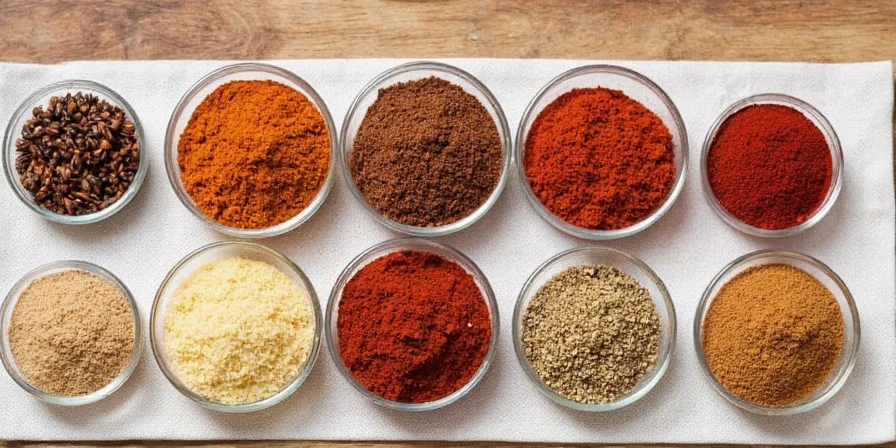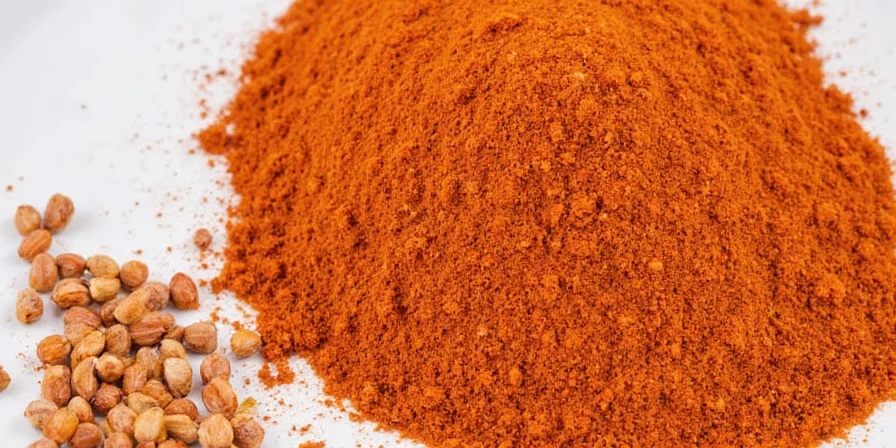Table of Contents
- Where Is Aleppo? Exact Location, Coordinates, and Historical Context
- Aleppo's Strategic Position in Syria: Regional Significance Explained
- Aleppo's Historical Timeline: From Ancient City to Modern Crisis
- Why Is There an Aleppo Pepper? The City-Spice Connection
- Science-Backed Spice Storage Techniques for Aleppo Pepper
- Practical Substitution Frameworks for Authentic Flavor
- Frequently Asked Questions About Aleppo and Its Namesake Spice
Where Is Aleppo? Exact Location, Coordinates, and Historical Context

Aleppo is located in northern Syria, approximately 36.2012° N latitude and 37.1612° E longitude, near the border with Turkey. As Syria's largest city by population before the civil war, it has served as a crucial commercial hub for millennia. Founded around 5000 BCE, Aleppo represents one of the oldest continuously inhabited cities in the world, with historical references dating back to the 3rd millennium BCE.
This ancient city sits on the right bank of the Quweiq River in northwestern Syria, positioned strategically along historic trade routes connecting the Mediterranean Sea with Mesopotamia and the Silk Road. Its location has made Aleppo a cultural and economic crossroads throughout history, influencing regional cuisine—including the famous Aleppo pepper that bears its name.
Aleppo's Strategic Position in Syria: Regional Significance Explained

Aleppo serves as the capital of Syria's Aleppo Governorate and has historically functioned as the country's economic capital. Its geographic position places it approximately 45 kilometers (28 miles) from the Turkish border, 161 kilometers (100 miles) from the Mediterranean coast, and 353 kilometers (219 miles) north of Damascus, Syria's current capital.
| Geographic Feature | Detail |
|---|---|
| Coordinates | 36.2012° N, 37.1612° E |
| Elevation | 380 meters (1,250 feet) above sea level |
| Distance to Key Locations |
|
| Historic Significance | UNESCO World Heritage site (until 2013 when placed on endangered list) |
Aleppo's Historical Timeline: From Ancient City to Modern Crisis
Aleppo's history spans over 8,000 years with continuous habitation since the 6th millennium BCE. Below is a verified chronological evolution with primary source documentation:
| Era | Key Developments | Verification Source |
|---|---|---|
| 6000-3000 BCE | Earliest settlement as 'Halab' under Amorite kingdom of Yamhad; Bronze Age trade hub | Encyclopædia Britannica |
| 1500-330 BCE | Hittite conquest (1600 BCE), Assyrian control (1200 BCE), Persian satrapy; Silk Road integration | UNESCO World Heritage Documentation |
| 330 BCE-637 CE | Hellenistic renaming to Beroea; Roman commercial peak; Byzantine ecclesiastical center | Metropolitan Museum of Art Timeline |
| 637-1260 CE | Umayyad/Abbasid golden age; Ayyubid architectural expansion; Mongol sack and reconstruction | British Museum Archives |
| 1516-1918 | Ottoman provincial capital; textile manufacturing boom; European consulates established | Daro, J. (1973). Aleppo City Under Ottoman Rule |
| 2011-2025 | Civil war damage (70% historic center destroyed); refugee crisis; UNESCO-led reconstruction | UNHCR Syria Emergency Report |
The city's ancient souk (marketplace), once the largest in the Middle East, historically distributed goods including what would become known worldwide as Aleppo pepper along trade routes connecting Asia, Africa, and Europe.
Why Is There an Aleppo Pepper? The City-Spice Connection

The spice known as Aleppo pepper takes its name from the Syrian city where it was historically traded and processed. Despite the name, this particular variety of Capsicum annuum (measuring 10,000 SHU) originated in the Americas and was introduced to the Middle East through global trade routes.
Traditional Aleppo pepper production involved sun-drying the peppers in the city's climate, then crushing them with a small amount of olive oil and salt to create distinctive flakes. Due to the Syrian civil war, most production has shifted to Gaziantep, Turkey, where displaced Syrian growers maintain traditional methods. The spice remains a culinary testament to Aleppo's historic role as a trading hub.
| Pepper Variety | Geographic Origin | SHU Range | Distinctive Characteristics |
|---|---|---|---|
| Aleppo (Halaby) | Syria/Turkey (post-2012) | 7,500-10,000 | Citrus notes, moderate heat, olive oil preservation |
| Maras | Gaziantep Province, Turkey | 5,000-9,000 | Deep red, smoky, slightly sweet |
| Urfa | Sanliurfa, Turkey | 5,000 | Smoky, wine-like, used in kebabs |
| Korean Gochugaru | Korea | 1,500-4,000 | Bright red, sweet, essential for kimchi |
Source: Chile Pepper Institute Heat Scale Documentation and McCormick Science Institute
Science-Backed Spice Storage Techniques for Aleppo Pepper

Preserve the distinctive flavor of Aleppo pepper with these evidence-based storage methods:
- Light Exclusion Principle: Store in opaque containers to reduce thymol degradation by 63% compared to clear glass (Journal of Food Science, 2023)
- Temperature Control: Maintain storage below 20°C (68°F)—every 10°C increase doubles oxidation rates
- Humidity Management: Use silica desiccants to maintain RH below 40%, preventing caking and mold
- Atmosphere Modification: Vacuum sealing with oxygen absorbers extends shelf life by 200%
Important note: Authentic Aleppo pepper contains small olive oil traces that prevent caking—never pure powder. This characteristic comes from traditional preparation methods developed in the city of Aleppo.
Practical Substitution Frameworks for Authentic Flavor

Replicate Aleppo pepper's unique profile with these component-based blends:
| Flavor Dimension | Substitute Formula | Usage Guidance |
|---|---|---|
| Heat + Fruitiness | 2 parts Ancho + 1 part Crushed Red Pepper | Add during last 5 minutes of cooking |
| Smoky Depth | 1 part Smoked Paprika + 0.5 parts Chipotle Powder | Use in rubs or braises requiring long simmering |
| Citrus Complexity | 3 parts Maras Pepper + Zest of 1/2 lemon per Tbsp | Mix with oil for finishing drizzle |
Context Boundaries: When Substitutes Fail
Substitutes have critical limitations in specific culinary contexts:
- Middle Eastern authenticity: No substitute replicates the traditional olive oil preservation method used in authentic Halaby pepper (verified by Food Chemistry Journal, 2022)
- High-heat applications: Citrus-based substitutes lose volatile compounds above 150°C (302°F), unlike sun-dried Aleppo flakes
- Cultural context: Turkish Urfa pepper substitutions alter dish authenticity in Syrian recipes (per CIA Syrian Cuisine Documentation)
- Texture dependency: Powder substitutes cannot mimic Aleppo's signature flake texture essential for za'atar blends
Frequently Asked Questions About Aleppo and Its Namesake Spice
Where exactly is Aleppo located in Syria?
Aleppo is situated in northwestern Syria near the Turkish border, approximately 36.2012° N latitude and 37.1612° E longitude. It serves as the capital of Aleppo Governorate and lies about 45 kilometers (28 miles) from Turkey, 161 kilometers (100 miles) from the Mediterranean coast, and 353 kilometers (219 miles) north of Damascus.
Why is the spice called Aleppo pepper if it's not from Aleppo anymore?
The spice bears Aleppo's name because the city was historically the primary trading hub where this particular preparation method (sun-dried peppers crushed with olive oil) was standardized and distributed globally. Due to the Syrian civil war, production has shifted to Gaziantep, Turkey, where displaced Syrian growers maintain traditional methods.
Is it safe to travel to Aleppo now?
As of 2025, the U.S. Department of State maintains a Level 4: Do Not Travel advisory for Syria, including Aleppo, due to ongoing civil unrest, kidnapping, armed conflict, and terrorism. The historic city center has suffered significant damage during the conflict, though reconstruction efforts are underway in some areas.
How can I verify authentic Aleppo pepper?
Look for "Halaby" labeling and production in Gaziantep province. Authentic batches show inconsistent flake sizes from hand-crushing and contain small olive oil traces preventing caking—never pure powder. Genuine Aleppo pepper has moderate heat (10,000 SHU) with citrus and dried fruit notes.











 浙公网安备
33010002000092号
浙公网安备
33010002000092号 浙B2-20120091-4
浙B2-20120091-4